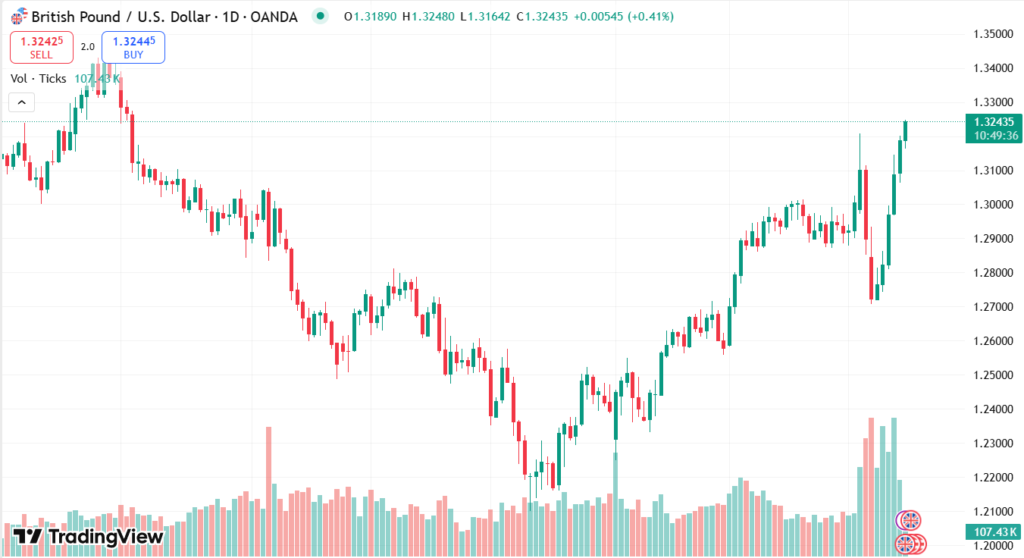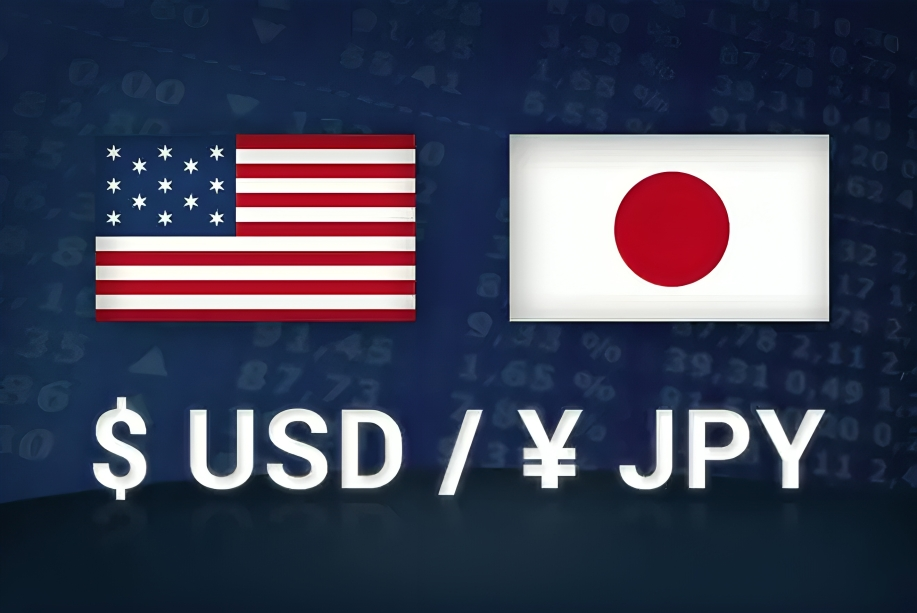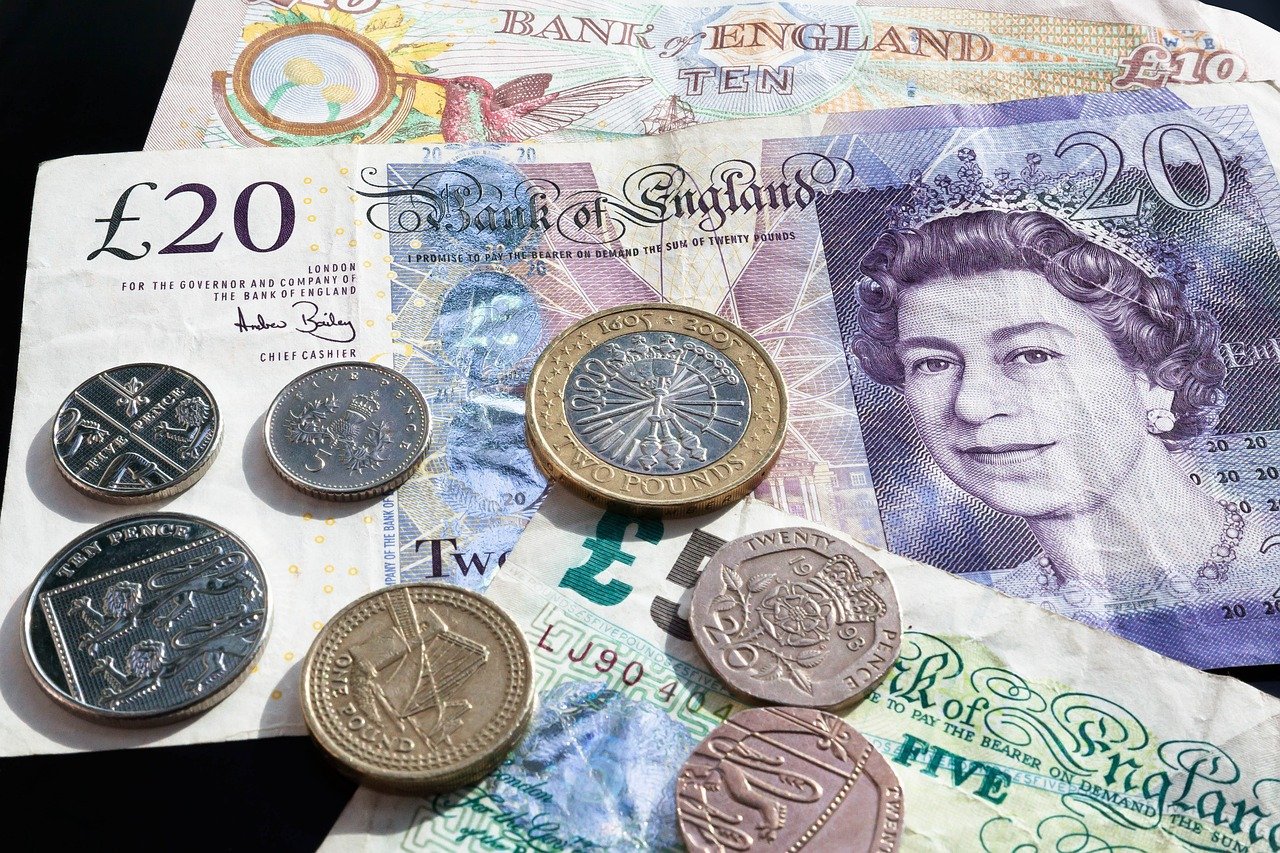The Pound Sterling has gained robustly after receiving strong UK labour market data covering the three months to February, with the economy creating 206K jobs above forecast. Though the unemployment level was unchanged at 4.4%, the growth in wages was mixed as average earnings, excluding bonuses, increased at a marginally reduced rate than predicted. Investors are now waiting for the March UK Consumer Price Index (CPI) reading for more information on the nation’s inflationary trends. In the meantime, uncertainty over US trade policies, especially over automobile tariffs, has put pressure on the US Dollar, making the Pound more attractive. Consequently, the GBP/USD pair has hit a six-month high, with a short-term positive outlook.
KEY LOOKOUTS
• The UK jobs market recorded substantial expansion with the addition of 206K new jobs, a considerable increase compared to the last quarter’s 144K. This reinforces investor faith in the Pound Sterling.
• Although average pay excluding bonuses rose at a reduced rate of 5.9% (lower than predicted 6%), wage growth continues to be positive, with expectations of the Bank of England lowering interest rates in May.
• American President Trump’s indications of suspending automobile tariffs have created doubts about the future direction of US trade policy, which is impacting the US Dollar’s safe-haven appeal.
• Markets will be focusing closely on the UK Consumer Price Index (CPI) for March, which is predicted to register core CPI expansion at a consistent 3.5%, and which will be offering additional pointers on the monetary policy approach of the Bank of England.

The Pound Sterling has gained appreciably with the publication of better-than-expected UK employment figures for the period up to the end of February, the economy having created 206K new jobs, thus exceeding forecasts. This upbeat labor market performance has boosted investor confidence in the British currency, although mixed wage growth data has kept market expectations for the Bank of England’s monetary policy largely unchanged, with the possibility of a rate cut in May. Meanwhile, uncertainty surrounding US trade policies, particularly President Trump’s consideration of temporarily suspending automobile tariffs, has pressured the US Dollar, further supporting the Pound’s upward momentum. With the UK Consumer Price Index (CPI) data for March set to be released, investors are keenly awaiting this data to gain insights into future inflation trends and their potential impact on the UK’s economic outlook.
The Pound Sterling has risen after robust UK employment figures, with 206K jobs created in the three months to February, beating forecasts. Uncertainty about US trade policy, especially over car tariffs, has also boosted the Pound’s advance against the US Dollar.
• The UK economy created 206K jobs in the three months to February, well above the 144K created in the last quarter.
• The UK unemployment level stayed steady at 4.4%, in accordance with estimates.
• Median earnings after excluding bonuses rose by 5.9%, a tad less than the forecasted 6%.
• Heterogeneous wage growth data will not materially influence market forecasts for Bank of England monetary policy.
• The market is waiting for the UK CPI data for March to determine inflation trends and possible effects on interest rates.
• US President Trump’s indecision regarding automobile tariffs is depressing the US Dollar, eroding its safe-haven status.
• The GBP/USD currency pair hit a six-month high, with a positive short-term outlook as a result of the Pound’s strength and weakening Dollar.
The Pound Sterling has gained strength after the publication of robust UK employment figures for the period ending February, as 206,000 new jobs were added to the economy, beating forecasts. This good labor market performance has given a welcome boost to investor sentiment in the British currency, even though mixed results have been seen in wage growth. Even though earnings growth has eased a little, the overall employment figures indicate a strong economy, making the Pound a good choice for investors.
GBP/USD DAILY PRICE CHART

CHART SOURCE: TradingView
At the same time, uncertainty over US trade policies, such as US President Trump’s possible suspension of automobile tariffs, has put further pressure on the US Dollar. This has helped the recent appreciation of the Pound versus the Dollar, as the market re-evaluates the appeal of the US currency. With investors looking for UK inflation figures for March, the focus will shift to how inflation trends could impact the Bank of England’s future decisions and further shape the economic forecast.
TECHNICAL ANALYSIS
Sterling Pound has displayed robust bullish momentum, as the GBP/USD pair hit a new six-month high at approximately 1.3235. All short-to-long Exponential Moving Averages (EMAs) are trending up, a sign of good market sentiment and that the uptrend could continue in the short term. The 14-day Relative Strength Index (RSI) has also shown a V-shaped rebound from 40.00 to 65.00, which is an indication of good buying pressure. On the negative side, the most important support level is in the vicinity of the 61.8% Fibonacci retracement level at 1.2927, while the 1.3430 level is major resistance, which could be the level for future price action depending on future economic news.

FORECAST
The Pound Sterling is likely to continue its bullish trend with the support of the positive UK employment news and the overall market mood. With the economy creating more jobs than expected, investor sentiment in the Pound is still strong. Moreover, the stress on the US Dollar from continued trade policy uncertainty under President Trump’s regime further supports the Pound. If the next UK inflation figures for March show consistent inflation, it may give additional support to the Pound, pushing it towards the next resistance level of 1.3430 against the US Dollar.
However, there are risks that may dampen the Pound’s momentum. Conflicting wage growth data and the threat of lower recruitment on account of increased National Insurance contributions from April may temper the positive outlook. Additionally, if the upcoming UK CPI data for March reveals lower-than-expected inflation or signals intensifying economic problems, the Bank of England may shift to a more dovish stance, which may create downward pressure on the Pound. Also, any reversal of US trade policy or President Trump’s unexpected decisions on tariffs may strengthen the US Dollar and lead to a pullback in the GBP/USD pair.







